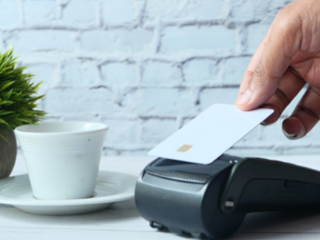
At a glance
Current account providers usually offer a debit card with most of their standard accounts. However, basic current accounts and some children’s accounts may come with a cash card instead.
A cash card is more restrictive than a debit card, but it can still be a useful option for some people.
A cash card, sometimes called an ATM card, allows you to withdraw money from your account at an Automatic Teller Machine (ATM), your bank’s branch and the Post Office. You will have a 4-digit PIN which you’ll need to input whenever you use your card.
You may also be able to use a cash card to deposit money into your account.
These cards are not contactless and you won’t normally be able to use these cards to pay for goods and services in-store or online, unlike debit cards, credit cards and some prepaid cards.
Cash cards can be offered with a range of accounts, including basic bank accounts, children’s bank accounts and even some savings accounts. Some providers may allow you to choose between a standard debit card or a cash card, depending on your preferences.
A debit card is a type of payment card that is linked to a current account.
You can typically use these cards to make payments in-store, online and over the phone, as well as withdrawing cash from an ATM.
While debit cards come with a PIN that you can input when you withdraw cash or make payments, most cards are now contactless which means you can pay with a quick tap of your card. You may also be able to link your card to a mobile payment service such as Apple Pay or Google Pay so you can pay with your phone instead.
Purchases made with a debit card are protected by the chargeback scheme. This scheme allows you to claim a refund from your card provider (Visa, Mastercard, American Express) if something you’ve purchased is faulty or doesn’t arrive and you’re unable to get a refund from the company you purchased from directly.
| Cash cards | Debit cards | |
| Cash withdrawals | Yes | Yes |
| Available with children's accounts | Yes | Yes |
| Make payments in-store and online | No | Yes |
| Contactless | No | Yes |
| Use abroad | Some (withdrawals only, fees may apply) | Yes (fees may apply) |
In the UK, the main brands of debit card are Visa and Mastercard. As you would expect, payments with a Visa Debit card are processed on Visa’s payment network, while payments with a Debit Mastercard are processed on Mastercard’s network.
Banks decide whether a card is a Visa Debit or a Debit Mastercard; you won’t normally be able to choose.
It shouldn’t make much difference whether you have a Visa Debit or a Debit Mastercard as both card types are accepted in most places. While there are some variations between the brands, these are unlikely to affect you on a day-to-day basis.
Maestro used to be a brand of debit card that was issued by Mastercard. However, from 1 July 2023, Mastercard has no longer issued new Maestro cards.
You can use most debit cards abroad but, depending on the provider, this could be an expensive way to spend. As a result, you should always check what fees may apply when using a card abroad. Some of the charges to look out for include:
You may also be able to use a cash card to withdraw money from an ATM while you’re abroad, although this will depend on the provider. Bear in mind that withdrawing cash abroad can be expensive so make sure you check for any fees your bank or the ATM provider may charge.
There are debit cards available that don’t charge you for spending abroad, as well as specialist prepaid cards and travel credit cards, so it’s worth comparing options before you travel.
Disclaimer: This information is intended solely to provide guidance and is not financial advice. Moneyfacts will not be liable for any loss arising from your use or reliance on this information. If you are in any doubt, Moneyfacts recommends you obtain independent financial advice.